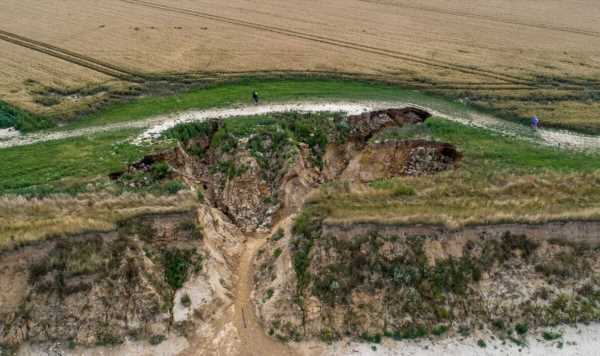

We use your sign-up to provide content in ways you’ve consented to and to improve our understanding of you. This may include adverts from us and 3rd parties based on our understanding. You can unsubscribe at any time. More info
Some of the UK’s most famous coastal areas could suffer extreme erosion due to climate change. There are seven areas that are most at risk according to figures from the Environmental Agency’s National Coastal Erosion Risk Mapping Project.
British coastal areas at risk
- Happisburgh, Norfolk
- Kessingland, Suffolk
- Hornsea, East Riding of Yorkshire
- Withernsea, East Riding of Yorkshire
- Sunderland, Tyne & Wear
- Filey, North Yorkshire
- Camber, East Sussex

Happisburgh in Norfolk could see 318m of land eroded in under 20 years, representing a loss of 97m by 2040.
The historic village has the oldest working lighthouse in East Anglia and a stunning coastline.
The Coastal Concern Action Group has been fighting to renew the village’s failing sea defences.
Kessingland in Sussex is also one of the British seaside spots most at risk from coastal erosion.
A popular destination for family holidays, Kessingland is also an area of huge historical importance.
Items from the Palaeolithic and Neolithic periods have been found on beaches around the area.
By 2040, an estimated 230 feet of coastline is expected to have been eroded in Kessingland.
Hornsea in the East Riding of Yorkshire, is another area at risk with 223 feet of land expected to be lost by 2040.

The seaside town has a Blue Flag beach and is also home to Yorkshire’s largest freshwater lake.
Withernsea, also in the East Riding of Yorkshire, is at risk of coastal erosion of 200 feet by 2040.
Sunderland also stands to lose vast areas of its coastline by 2040 while Filey in North Yorkshire is also at risk.
Camber in East Sussex is projected to lose over 130 feet of coastline to erosion within the next 20 years.
Coastal areas in the West of Wales could also suffer from coastal erosion, according to new research from Climate Central.
Sea levels around Britain have risen by six inches since 1900 and the Met Office thinks levels could rise by a further 3.7 feet by 2100.
Inland areas such as Peterborough, Cambridgeshire, Lincolnshire and parts of London could also be affected by rising sea levels.
Globally, nations such as the Maldives and Bangladesh are most at risk from the impact of rising sea levels.
Source: Read Full Article









